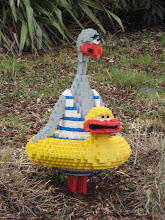We aren't running this, but one of our columnist submitted this as his column for the weekend. He's a Vassar College professor, who will remain nameless. I'll leave the rest for you to judge.
It’s always Easter. But at this time of year we actually talk about it, celebrate it.
Without contradicting any biblical account, I believe it’s useful to imagine the details of the first Easter morning differently than it’s usually depicted. Here’s what I mean:
As the blackness weakened in that hour before sunrise, Jesus suspected He wasn’t dead.
First, He noticed a gray halo of light slipping through the cracks between the cave in which he was entombed and the big rock blocking the entrance.
Then Jesus groaned, “My hands…. they hurt.” He also noticed His ankles ached and there was a throbbing pain in his left side.
When He was finally fully awake, He was still surprised. “Oh, the resurrection, it worked,” He thought. But Jesus was even more surprised at just how painful it was. During His lifetime it just never occurred to Him that the resurrection would hurt.
Now the practical problem: “How do I get the rock out of the way?,” He wondered. Jesus even smiled to Himself at the irony of rising from the dead only to die again of starvation if He couldn’t move that rock.
Avoiding his left side, Jesus slowly twisted Himself off the cold white marble slab, into a standing position. With swollen feet, He hobbled over to the entrance of the tomb.
He leaned against the rock, it didn’t move; He pushed, to no avail; He strained, without success.
Already sweating, He took a deep breath. As He let the air out, an angel appeared. Happy for the company and buoyed by the angel’s glistening garb, the task suddenly seemed less daunting
Working together, Jesus and the angel budged that big rock. “Good, good. That’s enough. I think I can make it through,” Jesus told the angel.
Then, standing straight and sucking in His stomach, Jesus shimmied His way out of the tomb and shuffled into a new dawn, a new civilization.
The advantage of this incarnation-laden account of Easter is how it reflects our deepest experience hope. Even if we have hope to the ultimate degree, all the way to resurrection, it’s always accompanied with struggle.
Of course this is true [here], like anywhere else in the world.
So if we’re homeless and seeking shelter with Hudson River Housing, or hungry and eating your one meal a day at the Lunchbox or depressed and seeking solace from the Mental Health Association our suffering doesn’t exclude hope, in fact, as Jesus shows us, it’s a condition for hope.
Wednesday, March 12, 2008
Subscribe to:
Post Comments (Atom)

1 comment:
Ouch. What does he teach??
Post a Comment